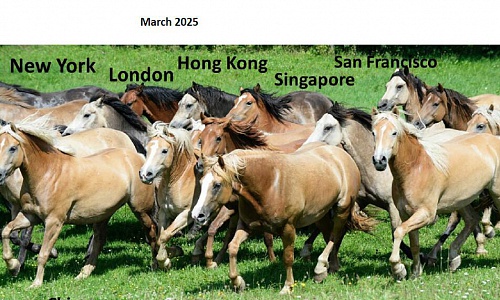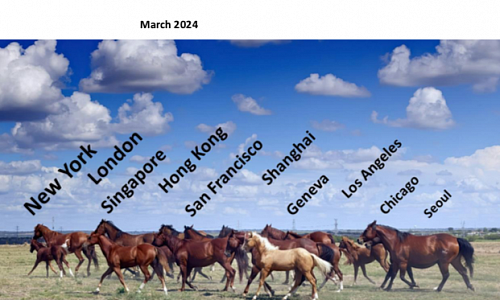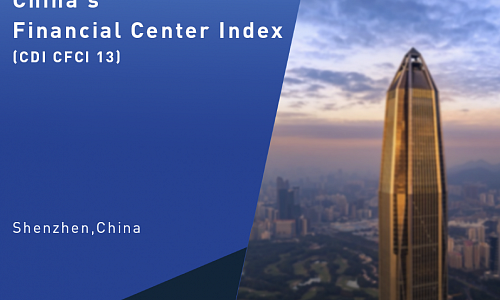
Insights

Author: Yu Zongliang, Research Assistant, Department of Regional Development Planning, CDI
Editor’s Note: China is Sri Lanka’s largest trading partner and the most important investor. The Sri Lanka-China Industrial Zone will become an important platform for Chinese enterprises going global as well as the industrial capacity cooperation between the two countries. However, the business environment of Sri Lanka needs further improvement, for which it is important for China and Sri Lanka to enhance communication on legal policies and improve environment for investors to jointly promote the development of the Sri Lanka-China Industrial Zone.
Sri Lanka occupies a strategic position in South Asia and has a liberalized economic system. Sri Lanka’s program for economic development prioritizes export as a national strategy in developing an export-oriented and import substituting economy in a bid to build Sri Lanka into an economic hub along the modern Silk Road in Asia. However, Sri Lanka remains an agricultural country with weak industrial foundation, unbalanced trade mix, and slow development of industrial zones.
At present, 16 industrial zones can be found in Sri Lanka, which are mainly focused on textile and clothing, along with other industries such as food processing, chemicals, automobile, IT, and education. Currently, Sri Lanka's industrial zones face a range of problems including limited space, small scale of businesses, limited industrial combined effect, and insufficient capacity of government in providing public services. Overall, Sri Lanka's industrial zones need further improvement in business environment and higher levels of economic development.
With the economic and trade ties between China and Sri Lanka becoming ever closer, China has seen fast increases in its investment to Sri Lanka, with Chinese companies deeply participating in the construction of sea ports, air ports, power stations and other important infrastructures. China became Sri Lanka’s biggest trading partner and source of imports in 2016. China should further enhance communication with Sri Lanka at a legal level, and help Sri Lanka to constantly improve the business environment of its industrial zones. First, China and Sri Lanka should sign a treaty of international legal significance, which covers free trade talks on trade in goods, trade in services, investment, economic and technological cooperation, etc. Second, Sri Lanka should introduce top legislation to regulate industrial zone development, further strengthen guarantee mechanism to safeguard the rights of investors. Third, Sri Lanka should put in place bilateral or multilateral national economic and diplomatic mechanisms with its trading partners for effective communication and coordination, and create high-level dialogue mechanisms for industrial zone development.
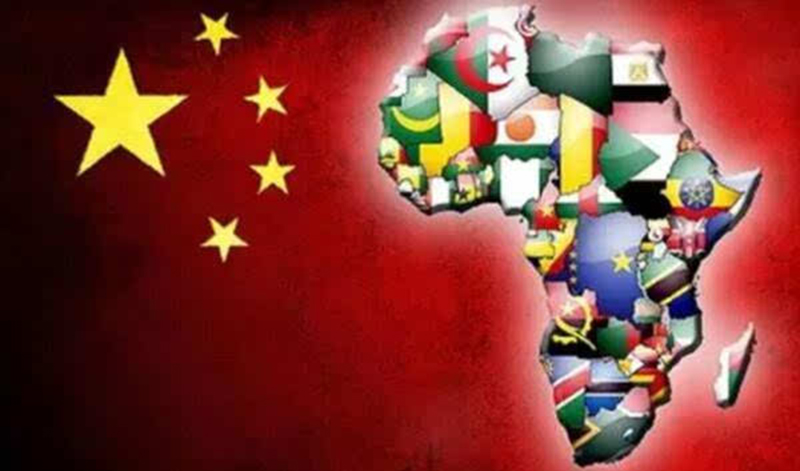 Author: Huang Rui, Postdoctoral Researcher, CDI
Author: Huang Rui, Postdoctoral Researcher, CDI
Editor’s Note: With the concept of mutual benefit and win-win cooperation in the "Belt and Road" initiative, the cooperation between China and Africa in production capacity and equipment manufacturing has developed rapidly following the rules of market. Meanwhile, it has also improved Africa's infrastructure and industrial systems.
Since the implementation of the reform and opening up policy in 1978, China has experienced rapid development as it makes full use of its labor force, resources and market advantages in the past 30 years. With the optimization and upgrading of China's industries, China’s industry has begun to move on to oversea. Africa has gradually become a key destination of China's capital and technology exports. For the further Sino-African cooperation under the "Belt and Road" initiative, China should follow the rules of industry transfer and focus on investment economics and social efficiency.
In recent years, China has built a number of railways and industrial parks in Africa through the cooperation between international capacity and equipment manufacturing. The railways China builds in Africa connect the continent’s ports and resource-rich inland cities. Such a “railway-port” mode provides Africa with advanced transportation basis for industrial development and stimulates the export of China's steel, locomotives, cement and communications equipment. The overseas economic and trade cooperation zones that China has established in Africa are all based in the cities along the railways built by China. They are solid industrial bases for the host countries, meanwhile; further the development of Sino-African capacity cooperation and China’s industrial transfer.
With the development of Sino-African cooperation, China's industrial layout in Africa has gradually unveiled with the combination of railways, ports and industrial parks. There is still room for improvement. First of all, to ensure the sustainability of the "Belt and Road” projects, we should utilize the railway network to prop up the industrial network. Secondly, we should promote the smooth development of industries transferred from China to Africa. Thirdly, as more enterprises settle down in overseas economic and trade zones, we should gradually enhance the combined effect among enterprises for the cooperation of industry chains.
 Author: Zeng Manyuan, Research Assistant, Department of Regional Development Planning, CDI Wang Zhen, Research Associate, Department of Regional Development Planning, CDI
Author: Zeng Manyuan, Research Assistant, Department of Regional Development Planning, CDI Wang Zhen, Research Associate, Department of Regional Development Planning, CDI
Editor’s Note: Countries along the "Belt and Road" in the Middle East regards the establishment of special economic zones as a viable path to mitigating troubles in the petroleum sector and realizing economic transformation. The successful model and experiences of the Shenzhen Special Economic Zone, has been highly regarded by the government of Kuwait.
Production capacity and mutual investments are priorities in the course of the joint establishment of the "Belt and Road" with special economic zones becoming an effective platform.
First of all, the establishment of special economic zones will function as a vital platform for Sino-Kuwaiti joint efforts in building the "Belt and Road". Kuwait has always been a steadfast supporter for the “Belt and Road” initiative. In order to alleviate current predicament of the oil industry and achieve economic transformation, the government of Kuwait has made plans for the projects of Silk City and five-island comprehensive development zones with an intention to leverage China's advanced experiences in building special development zones. Furthermore, the integrated management model for special economic zones is going to be a paramount subject for Kuwait to study from. Strategic planning, rules and policies, investment and financing, development and construction, and operation management are all pivotal to the overall construction and planning of the special economic zones. Rules and policies related to the general operation of special economic zones will directly affect the zone's investment and industrialization.
Last but not least, the life-cyclic management of special economic zones will facilitate Sino-Kuwaiti joint efforts in building the "Belt and Road". The Kuwaiti government needs to ensure that the national development strategy is supportive for the establishment of special economic zones and to stipulate rules and policies which will improve the investment environment of the special economic zones. The objectivity and rationality of the special economic zones should be considered as the top priority in the early stage of the planning. What’s more, industries featured by the Sino-Kuwaiti production capacity cooperation should also be arranged in the special economic zone in the phase of attracting investment. Kuwait needs to improve the government efficiency and management in the special economic zones based on the overall planning so as to optimize the investment environment of the zones.
Author: Fan Gang, President of CDI
Editor’s Note: Professor Fan Gang had a television exclusive interview with CBN on a series of macroeconomic issues including global market, monetary policy, and foreign exchange rate. Following are edited excerpts from the interview:
 “Loose monetary policy cannot be used to control financial risks.”
“Loose monetary policy cannot be used to control financial risks.”
Bursting credit risks have triggered heated debates since March. Given current supply-demand relationship, a prudent monetary policy shall be in place. Default becomes a natural thing due to high leverage and severe supervision caused by overheated economy. Financial risks need to be controlled, yet a loose monetary policy is not an option.
“Deposit reserve ratio reduction is not equivalent to monetary policy easing.”
At present, China’s foreign exchange reserves have been cut down. Therefore, reserve ratio has to be lowered to maintain quantity of money, which is a neutral rather than loose monetary policy.
“It is not about whether to maintain FX reserves or exchange rate.”
There is no need to protect FX reserves as China's foreign exchange reserves dropped below $3 trillion due to RMB internationalization progress like yuan’s inclusion in SDR basket and the fact that United States treasury bonds are low in efficiency and returns. Meanwhile, the renminbi will move towards a more flexible exchange rate rather than a fixed one that is pegged to the US dollar. Therefore, maintaining exchange rate is just groundless talk. Overnight foreign exchange reserve fluctuation is unwanted for any country. Certain measures will be taken to ensure stable transition in exchange rate or FX reserves.
“Be prepared for short-term appreciation and long-term depreciation of the US dollar.”
After Trump came to power, Sino-US relations are filled with "uncertainties", but several things are clear. First, Trump can no longer accuse China of currency manipulation; second, the Trump administration will increase trade frictions between the two countries, but will not launch a full-fledged trade war against China; third, Trump will reinforce public opinions through tax cuts and infrastructure investment growth. As a result, USD will appreciate in the short run with foreign investments attracted to the US and the prices of crude oil and staple commodities at the international market will be on the rise at the same time. America’s social security expenditure will continue to grow and its deficit and inflation will see a strong uptrend as a consequence of Trump’s tax cuts and intensified infrastructure investment. All this is likely to lead to depreciation of the US dollar.
Author: Stephen Olson, special contribution to CDI. Research Fellow at the Hinrich Foundation
Editor’s Note: There are four main issues regarding trade policy and the Trump administration to address: process and power, the key people on the Trump trade team and their perspective, recent policy developments and likely scenarios.
 There are four main issues regarding trade policy and the Trump administration to address. What authority does President Trump actually have to implement his trade agenda? Who are the key people on the Trump trade team and what is their perspective on international trade? How should we interpret several recent policy developments? What are some of the most likely potential scenarios moving forward?
There are four main issues regarding trade policy and the Trump administration to address. What authority does President Trump actually have to implement his trade agenda? Who are the key people on the Trump trade team and what is their perspective on international trade? How should we interpret several recent policy developments? What are some of the most likely potential scenarios moving forward?
Process and power
As a candidate and in the early days of his administration, President Trump made a number of very provocative policy pronouncements about what he would like to do in the area of international trade. This raises the obvious question: does he actually have the authority to do the things that he is talking about? The short answer is: yes, he does.
The US Constitution provides authority to manage international trade to the US Congress. However, over the years the US Congress has delegated a significant amount of authority back to the president. Section 301 of the Trade Act of 1974 gives the president the authority to take retaliatory action, such as tariffs, if he determines that US commercial interests are being damaged by unfair or discriminatory trade practices from foreign countries.
Although President Trump doesn’t have unlimited power when it comes to international trade, he does have very substantial power to implement most— if not all— of what he has talked about on his trade agenda.
People and perspectives
There are several critical individuals to discuss on the Trump trade team: Wilbur Ross, Commerce Secretary; Robert Lighthizer, nominated US Trade Representative; Peter Navarro, head of the National Trade Council, and Gary Cohn, Director of the National Economic Council.
Wilbur Ross is a very successful private equity investor with a lot of experience in China and very clear-cut viewpoints on China. During his Senate confirmation hearings, Ross expressed the viewpoint that China is the most protectionist large country in the world and believes that the United States should only open its borders to those countries that “play by the rules”.
Robert Lighthizer is the well-qualified nominee with real government experience for US Trade Representative. From a philosophical point of view, he feels that the United States has outdated, over-idealized notions of free trade while the rest of the world isn’t playing by the same rules. He certainly advocates a more aggressive stance on China.
Peter Navarro serves as the head of the National Trade Council—a newly created position in the White House. Navarro is most famous, or infamous, for a book and subsequent documentary titled “Death by China”, which does not provide a favorable look at China’s trade policies. He also advocates a much tougher, aggressive trade stance vis-a-vis China.
Gary Cohn is the head of the National Economic Council. He holds more traditional pro-free trade viewpoints, and has proven to be surprisingly influential in the Trump White House. He can be expected to attempt to moderate some of the harder-line trade stances taken by his colleagues.
In general, these gentlemen— who will form the core group of the Trump administration on international trade— are deeply experienced and have very well developed viewpoints on international trade.
Recent policy developments
President Trump has recently signed a number of Executive Orders (EO) related to international trade. These EOs call for a tighter enforcement of AD/CVD cases, a review of countries with large trade surpluses with the US, an investigation into steel imports, and a review of Buy America provisions in trade agreements. The main themes from the trade policy agenda submitted this year by the Trump Administration are: a seeming willingness to disregard WTO rulings, stricter enforcement of trade laws, and a greater use of leverage in negotiating trade agreements.
Potential scenarios
One of the first scenarios from the Trump administration is a much different approach to trade agreements. Under the Obama administration and in most administrations in the past 30 years, geostrategic considerations have played a very high role in the conduct of US trade policy. Case and point is the Trans-Pacific Partnership (TPP). This will change under the Trump administration. Geostrategic considerations will be significantly downgraded and perhaps even thrown out the window. Trade policy and trade agreements will now be conducted on the basis of whether they meet the following three criteria: they increase US growth rates, reduce the US trade deficit and strengthen the US manufacturing sector. The focus will be on economics. The Trump administration is also likely to put their emphasis on bilateral negotiations rather than multilateral or regional agreements for the reasons of greater degree of leverage and higher common denominator approach in bilateral negotiations.
The second potential scenario from the Trump administration is a more aggressive push back against perceived unfair trade practices. The first is an increase in antidumping and countervailing duties cases filed against trading partners. The second is levying punitive tariffs during the course of trades. The third is considering currency manipulation as an unfair export subsidy which would further result in the imposition of tariffs. Finally, the Committee on Foreign Investment in the United States (CFIUS) already has pieces of draft legislation circulating around Capitol Hill that would toughen the enforcement and monitoring of investments moving into the United States.
For the third potential scenario, it is extremely likely that there will be a renegotiation of the North American Free Trade Agreement (NAFTA). Some of the most likely issues to be negotiated include, first and foremost, tighter rules of origin under the Trump administration. Considering that government procurement provisions in NAFTA circumscribe the ability of governments to give preferences to domestic suppliers. Thus, the Trump administration will likely be looking to weaken the government procurement provisions in NAFTA so it has more latitude to implement “Buy American, Hire American” policies. The other area is wages, Wage issues, along with broader labor and environmental issues are likely to come up in a renegotiation of NAFTA.
Renegotiating NAFTA is actually a very healthy exercise. The NAFTA agreement is 23-years-old, so it makes sense to review what works well, what doesn’t work well, and see if there are things to improve or update. The likelihood is that the three countries will be able to agree to a very reasonable set of adjustments that result in an improved NAFTA moving forward.
The fourth potential scenario centers on US-China relations. While volatility is certainly not a foregone conclusion, it is a possibility. If China and the US have trade conflicts, what are some of the tools China has in its toolbox to strike back against the United States?
Antidumping and countervailing duties are probably tool number one. China has learned very well from both the US and the European Union by constructing an antidumping and countervailing duty law. This law is highly effective and capable of inflicting serious damage. If a spate of cases is filed by the US against China, it is likely to see China filing a number of antidumping or countervailing duty cases against the United States, which would have very specific economic impact.
The other tool that China has to respond with would be using its regulatory regime to tighten the screws on US businesses doing business in China. The anti-monopoly law could be used, particularly in the areas of pharmaceuticals, smart manufacturing, and medical devices.
Another thing that the Chinese government can do is to use its influence in the economy—through state-owned enterprises—to change purchasing decisions. For example, a number of very expensive airplane orders that previously would have gone to Boeing could now go to Airbus.
The final item, depending on what action the US takes, is the Chinese government could be on firm ground to raise dispute settlements in the WTO. Of course, each case would need to be decided on its own merits, but that is a possibility.
Trade policy under the Trump administration is going to diverge very sharply from a number of the fundamental principles that has guided US trade policy for 30 years. At this point, it is entirely premature to speculate what the results of this new approach to trade will be. But for whatever it is worth, keep your seatbelts fastened because we could be hitting a period of turbulence.
Author: Song Ding, Senior Research Fellow of CDI
Editor’s Note: There are several issues to be considered as for Xiongan New Area which is aimed at accepting non-capital functions from Beijing, exploring a new model of optimized development in densely-populated areas, and restructuring the urban layout in the Beijing-Tianjin-Hebei region.
 The Establishment of Xiongan New Area is expected to help phase out some non-capital functions from Beijing, explore a new model of optimized development in densely-populated areas, and restructure the urban layout in the Beijing-Tianjin-Hebei region. However, there are several issues to be considered.
The Establishment of Xiongan New Area is expected to help phase out some non-capital functions from Beijing, explore a new model of optimized development in densely-populated areas, and restructure the urban layout in the Beijing-Tianjin-Hebei region. However, there are several issues to be considered.
Strategic Positioning and Industrial Development
The most practical functional positioning of the Xiongan New Area is to accept non-capital functions unloaded from Beijing and to foster a new growth engine for the Beijing-Tianjin-Hebei city clusters.
In transferring the "non-capital" functions out of Beijing, it is essential to relocate state-owned enterprises especially the lower-end traditional industry chains of these enterprises. If these enterprises and industries were simply moved to the Xiongan New Area, then the new area would be home to the unwanted and lower-end industries and over-staffed state-owned enterprises of Beijing. This would be going against the positioning of the new area. Despite institutional reform and industrial upgrading in the process of the relocation, it would be extremely difficult given the fact that these industries and enterprises have been developing for a very long time in Beijing with a lot of deep-seated problems. Major changes are unlikely to take place with the sudden and mass relocation to the new area.
Lessons from the Development of the Binhai New Area and Caofeidian
It is not the first time to establish a state-level development zone in the Beijing-Tianjin-Hebei region. Years ago, Tianjin set up the Binhai New Area with the hopes that it would become a leader in the integrated growth of the Beijing-Tianjin-Hebei region. Now more than ten years have passed, but the Binhai New Area has failed to achieve the initial strategic goals in terms of institutional reform and regional development. As to Caofeidian located in Tangshan, it also cherished the vision of transferring non-essential functions of Beijing, only to soon fall into predicament because of disadvantages in location, population, capital, industrial structure and operation mechanism, etc.
The development of the Binhai New Area and Caofeidian sends an important signal to the development of the Xiongan New Area, which is currently in the limelight. The new area is set up against the backdrop of huge pressure for transformation and upgrading of the Chinese economy. It is necessary to learn from the experiences in the development of the Binhai New Area and Caofeidian.
Paralleling Shenzhen Economic Zone and Pudong New District
The aim of Xiongan New Area is to rival two famous regions, namely, the Shenzhen Economic Zone and Pudong New District. However, this does not mean that the new area can copy the experience of Shenzhen and Pudong.
In terms of regional layout, Shenzhen borders Hong Kong, whose market economy and global background played a fundamental role in promoting Shenzhen’s growth, while Pudong is situated in Shanghai, the biggest financial center of China. Xiongan is different, as it is over 100 km away from Beijing and Tianjin. From the perspective of urbanization, Xiongan features a lower starting point and greater difficulties.
Time-wise, Shenzhen and Putong rose in the 1980s and 1990s respectively, at a time of China’s reform and opening up, during which the annual GDP growth rate could soar to a startling 20% and even 30%. The Xiongan New Area, however, is set up at a time of economic transformation and upgrading, which means that much of the experience of Shenzhen and Pudong are no longer applicable in the current situation.
In terms of industries, at the early stage of its development amidst an extremely weak national economy, Shenzhen was able to make full use of industries, technologies, capital and management of Hong Kong, all of which were the most advanced in China at that time. Pudong is home to advanced industries in Shanghai, including large numbers of headquarters of foreign-funded businesses. In contrast, the industries labeled “non-capital functions” of Beijing, most of which are neither high-tech nor advanced, would be moved to Xiongan. \
It is evident that if Xiongan is to parallel Shenzhen and Pudong, it should not only undertake the “non-capital functions” of Beijing, but also should build industry chains of high standards. This, however, poses great challenges.
Development Mode
The development mode of the Xiongan New Area shall firstly be supported by dedicated state policies, including the preferential policies in tax and personal income. Secondly, decentralization of power is needed to enable pilot reform by adopting a negative list. Thirdly, it shall build an institutional mechanism that truly depends on market. Fourthly, an industry framework shall be built to promote advanced industries as economic engines. Fifthly, it shall allow for experiments in legislation and law-based management. Lastly, a fundamental pattern featuring small government and big market shall be in place.
Xiongan is situated near the capital which has strong administrative power in northern China, where the role of market is relatively weak It is therefore not an easy task to break away from the ineffective development mode in the past. The only way out, nevertheless, is to tackle these difficulties and create a new development mode in northern China.
Environmental Security
Smog is prevalent across the Beijing-Tianjin-Hebei region, and Xiongan is no exception. Xiongan is home to Baiyangdian, the largest lake in North China, which had once dried up. Upon setting up, the new area faces daunting challenges in environmental protection. In the coming years, Xiongan will enter into a stage of rapid development, which will further increase the pressure on the environment. Globally, there have never been cases of vigorously developing economy which keeps the environment intact at the same time. Challenges for the environmental regulators of Xiongan are severe.
Author: Fan Gang, President of CDI
Editor’s Note: China’s economy has seen strong performance in the first quarter but still needs a few years for consolidation due to overcapacity and other problems caused by an overheated economy in the past. After that, China’s economy shall enter into a new round of growth, hopefully within the proper range of 7%-8%. China’s economic growth still has a long way to go since consumption boom is just beginning.
 A major engine for China’s economy is the constant rise of consumption, which has been growing at a faster rate than ever before. Consumption now accounts for around 62% of the GDP, up from around 52% in the past, and individual consumer spending is now around 45%, up from 35% in the past. Compared to developed countries, China still has huge potential. Consumption is taking up an ever bigger share of the economy and China’s consumption boom is just beginning. This trend is in line with the rule of economic development regarding the shift from production, savings and investment at the earlier stage of development to consumption at the later stage. The rise of China’s middle class and per capita GDP naturally contributes to the rise of various consumption. Despite the serviced-based consumption such as tourism and fitness, China's consumption is still largely characterized by a fairly huge proportion of material consumption. Therefore, China's manufacturing industry still has tremendous potential for development.
A major engine for China’s economy is the constant rise of consumption, which has been growing at a faster rate than ever before. Consumption now accounts for around 62% of the GDP, up from around 52% in the past, and individual consumer spending is now around 45%, up from 35% in the past. Compared to developed countries, China still has huge potential. Consumption is taking up an ever bigger share of the economy and China’s consumption boom is just beginning. This trend is in line with the rule of economic development regarding the shift from production, savings and investment at the earlier stage of development to consumption at the later stage. The rise of China’s middle class and per capita GDP naturally contributes to the rise of various consumption. Despite the serviced-based consumption such as tourism and fitness, China's consumption is still largely characterized by a fairly huge proportion of material consumption. Therefore, China's manufacturing industry still has tremendous potential for development.
China’s consumption growth is highly dependent on three social groups. The first consumer group is the younger generation. Firstly, young people are confident in their future income. Secondly, many young people are the only child in their family, which means they might have four elders in the family who tend to save money for the youngest generation and share a great deal of their burdens, providing them with the consumption support. The second consumer group is the financially well off retirees, who, with adequate time and money, are prepared to travel and enjoy life. The third consumer group is middle-age people. With the introduction of the second-child policy, education and housing in the school district will give a huge impetus to consumption. Therefore, the next round of China’s economic growth will rely more on consumption instead of investment.
The internet represents the greatest revolution in science and technology, reduces information cost, and brings new impetus for development. The internet successfully connects credit, risk, and data, promoting the growth of consumer finance and improving the ecosystem of the financial sector. Preferred terminology is “industries plus the internet”, and not “internet plus industries”. The regulatory authorities shall also actively adapt to new advances in technology so as to promote sustainable and healthy development of industries.
Author: Fan Gang, President of CDI
Editor’s Note: The economic downturn in recent years are cyclical fluctuations which are resulted from overheated economy and investment. Besides, the functional and economic significance of the consolidation period of soft landing should not be underestimated. In addition, material consumption is far from over and investment should aim at new consumption models.
 The economic downturns in recent years are cyclical fluctuations.
The economic downturns in recent years are cyclical fluctuations.
Though China’s economy has been declining for six consecutive years, last year has witnessed some improvements. Deflation, indicated by the Producer Price Index, has basically come to an end in the second half of last year. The main problems now include overcapacity, inventory backlog and debts which are typical cyclical problems and the results of overheated economy and investment. To deal with these problems, we must cut excessive industrial capacity and conduct destocking and deleveraging.
The functional and economic significance of the consolidation period of soft landing shall not be underestimated.
There are different ways to deal with crises. Some market economies have opted for hard landing to address problems by rapid and massive restructuring, yet China is inclined towards soft landing as we do not want to lower the growth rate so much as to turn sporadic problems into systemic ones. The advantage of soft landing is that there will be neither negative growth nor recession while the disadvantage is that it is more time consuming.
It may take some time to address problems such as overcapacity, inventory backlog, debts and supply-side structural reforms. Regarding investment, consolidations, mergers and acquisitions are necessary for a variety of industries to improve concentration, which is in line with the law of the market, namely, survival of the fittest. In this way, China's economic and industrial structure will be further improved and thus lay the foundation for future growth.
Material consumption is far from over and investment shall aim at new consumption models.
China's economic structure is changing as consumption takes up an ever greater proportion. When income reaches a certain level, consumption will start to accelerate. The internet enables consumption to extend to small towns and rural areas.
Material needs are far from being satisfied in China and material consumption is still the primary concern for most Chinese people. Therefore, China's manufacturing industry shall never be ignored from investment’s point of view. Instead, it has great development potential with further adjustment, concentration and upgrading. At the same time, service consumption is indeed increasing and demand is expanding. Spiritual consumption ranging from movies and entertainment to fitness, pension and financial services is on the rise, which is also a major trend.
Nowadays there are debates around the world on the replacement of human employment by artificial intelligence. But if we take a deeper look, we would find that human beings have been trying to use machines instead of human labor to improve productivity, thus bringing about huge space for development of leisure and entertainment consumption.
Overall, in terms of investment, the odds of success will be higher if we pay more attention to using new technologies to meet the needs of the market and adjust the business model according to consumer demand so that supply and demand would be more balanced.
Author: Fan Gang, President of CDI
Editor’s Note: at Session 24 Global Economy: Moving Beyond Sub-Health, Fan Gang said that high economic growth rate is unhealthy and China would like to lower its foreign reserves gradually.
 High economic growth is not necessarily healthy as China currently deals with the consequences of overheated economy in the past. China's central bank is also reluctant to hold $4 trillion in foreign reserves, hoping to lower it to the desired two trillion, yet the central bank does not want to see it happen overnight.
High economic growth is not necessarily healthy as China currently deals with the consequences of overheated economy in the past. China's central bank is also reluctant to hold $4 trillion in foreign reserves, hoping to lower it to the desired two trillion, yet the central bank does not want to see it happen overnight.
China's economic growth rate in 2007 was 14% and it returned to 12% after the crisis with the influence of stimulus policies. This kind of overheated growth is unhealthy. We are now actually dealing with the consequences of overheated economy. As long as the economy is stably growing without further recession, the current growth rate is fine.
Zombie businesses are already dead and need to be removed. Some debt-to-equity projects are still in progress and the closure of certain companies are also under discussion. These businesses are trying to find a way to solve the problem of layoff or unemployment, but no tangible results have been produced by now. Zombie businesses now still exist and are holding back the economy but the negative effect is not as serious as before.
Author: Fan Gang, President of CDI
Editor’s Note: at Session 28 Labor Market Reform: Tough, but a Must-Do during the Boao Forum for Asia Annual Conference 2017, Fan Gang said that freelancers who have emerged with the development of the Internet should be covered by social security system so that they could gain the social recognition and a sense of belonging to the society.
 With the development of the Internet, many non-traditional forms of employment have emerged, such as liberal profession, remote jobs, part-time employment, etc. However, in fact, these people may actually have pretty stable jobs, earning more than in large companies. Moreover, they can also enjoy more leisure time.
With the development of the Internet, many non-traditional forms of employment have emerged, such as liberal profession, remote jobs, part-time employment, etc. However, in fact, these people may actually have pretty stable jobs, earning more than in large companies. Moreover, they can also enjoy more leisure time.
Social security coverage should be made compulsory for these people so that they could enjoy the same benefits as others. Efforts shall also be made to make these forms of employment accepted by the general public.
Freelancers, in need of social recognition, may want to take part in social organizations and social institutions. We should give full play to the mechanisms of social associations in terms of social security and professional skills so that they can have a sense of belonging to the community. Training programs can be organized for freelancers to enable them to actively participate in social organizations, which will be important in the future.
More...
Author: Guo Wanda, Executive Vice President of CDI
Editor’s Note: Guangdong-Hong Kong-Macao Bay Area, a metropolitan area featured with vitality, technology and innovation, emphasized by Premier Li Keqiang in the Report on the Work of the Government 2017, implies greater opening-up of China.
 The world is now experiencing de-globalization. Yet China is stepping up opening-up to the outside world. Premier Li Keqiang proposed in the Report on the Work of the Government 2017 for the first time to work on the development planning of Guangdong-Hong Kong-Macao Bay Area, which means that China now sets even greater store by opening up.
The world is now experiencing de-globalization. Yet China is stepping up opening-up to the outside world. Premier Li Keqiang proposed in the Report on the Work of the Government 2017 for the first time to work on the development planning of Guangdong-Hong Kong-Macao Bay Area, which means that China now sets even greater store by opening up.
The Bay Area is a very important strategic hub for the One Belt and One Road. The guidelines proposed by the Belt & Road initiative, including policy coordination, facilities connectivity, unimpeded trade, financial integration and people-to-people bond will play a strong role in the Bay Area. In return, the Bay Area will inject new vitality into the Belt &Road initiative.
The Bay Area has considerable complexity. On the one hand, the legal systems of Hong Kong, Macao and the Chinese mainland are different; on the other, complexity also implies diversity and inclusiveness, which will make the Bay Area a place with huge potential for development as it is full of vitality and suitable for innovation.
Guangdong-Hong Kong-Macao Bay Area is a metropolitan cluster. First of all, the infrastructure connectivity shall be well planned. Only with facilitated commuting between different cities, can the flow of elements be efficient. Second, building a livable Bay Area is essential to attracting global talents. Other important considerations include financial opening and capital flow, etc. All of these require top-level design and solutions to overcome the existing institutional and legal barriers. Therefore, it is essential to establish a mechanism to solve these problems.
A dynamic and innovative bay area features a large number of immigrants, scientific and technological development as well as de-centering, with which Guangdong-Hong Kong-Macao Bay Area can be a match for San Francisco.
Author: Fan Gang, President of CDI
Editor’s Note: “The decline in China's foreign reserves is good news in the long-run,” said Prof. Fan Gang, the President of CDI, in an interview with Bloomberg Television in Shanghai on January 9, 2017.
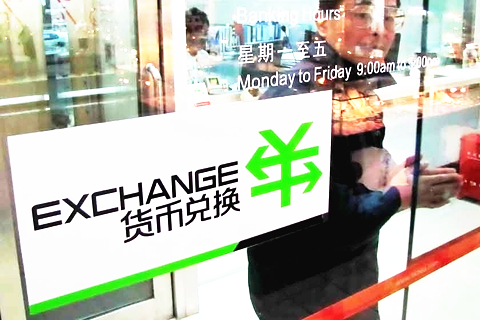 The decline in China's foreign reserves is good news in the long-run,” said Prof. Fan Gang, the President of CDI, in an interview with Bloomberg Television in Shanghai on January 9, 2017.
The decline in China's foreign reserves is good news in the long-run,” said Prof. Fan Gang, the President of CDI, in an interview with Bloomberg Television in Shanghai on January 9, 2017.
Much of the yuan that’s been converted into dollars hasn’t left the country, but shifted from official holdings to the private sector, according to Fan. Large foreign currency holdings by the government are deemed as less efficient. To improve efficiency, banks can use those funds to invest in higher-return assets.
China's reserves shrank by $41 billion to a fresh five-year low of $3.011 trillion in December 2016, posting the sixth straight month of declines. Capital flight has accompanied yuan’s steepest annual drop in more than two decades.
The government's moves to restrict capital outflows, which have fuelled depreciation in the yuan, are to prevent rapid fluctuations in reserves. Fan said that no government likes to see rapid changes in its foreign reserves. Instead, it prefers to see incremental changes over time. What’s more, he also said that yuan was overvalued for the last three or four years and this should be corrected.
Chinese policy makers’ intensified efforts to stem capital outflows have been effective and the market has started to respond. According to Fan, while China will not totally drop capital control measures yet, it is unlikely that they will step them up.
The inclusion of yuan in the SDR basket has made it an international currency, which means China needs to hold less foreign reserves for the purpose of international credit. “We have been talking about the inefficiency of $4 trillion in foreign reserves and the ridiculousness of a developing country financing a developed country,” Fan said.
Author: Peng Jian, Director of Department of Regional Development and Planning
Editor’s Note: A hawkish transition team determined to reshape global economic and trade landscape was formed upon Trump taking office. Trade war of "anti-globalization" was launched with China as the main target. The "anti-globalization" Trump’s team pushes for will face an unfavorable situation with one vote in favor and three votes against.
 A hawkish transition team determined to reshape global economic and trade landscape was formed upon Trump taking office. On the one hand, the backflow in the manufacturing sector was vigorously promoted; on the other hand, trade war of "anti-globalization" was launched with China as the main target. A trade war, very likely if not inevitable, could lead to a sharp decline in China's exports to the United States, bringing about losses of 2% to China's GDP.
A hawkish transition team determined to reshape global economic and trade landscape was formed upon Trump taking office. On the one hand, the backflow in the manufacturing sector was vigorously promoted; on the other hand, trade war of "anti-globalization" was launched with China as the main target. A trade war, very likely if not inevitable, could lead to a sharp decline in China's exports to the United States, bringing about losses of 2% to China's GDP.
The "anti-globalization" Trump’s team pushes for will face an unfavorable situation with one vote in favor and three votes against. The one "yes" vote comes from the American middle and lower class, and the three "no" votes are from federal state organs, elite groups and the majority of allies.
The opposition from state organs mainly lies with the US congress. The US national debt has reached US $ 19.5 trillion, taking up 106% of its GDP, and it will soon reach the ceiling as trade war will also increase government spending. Elite group opposition is mainly seen in the military, oil, finance, high technology and other interest groups. These groups are the core strengths of the United States. Anti-globalization will place constraints on them and damage the large interests they have gathered in globalization. The majority of allies such as European countries, Japan and other allies are also against anti-globalization. The US population, technology, resources and military powers are all capable of supporting the country’s self-sustained development, while its allies are generally short of domestic market and resources, thus their sustained and safe development must rely on globalization.
China, from the inside, is one of the few countries that are potentially capable of self-sustained development other than the United States, which gives China the greatest advantage. China has pushed forward measures in military, politics and economy to respond to anti-globalization. China has always been strengthening China-Russia strategic cooperation and has maintained good strategic cooperative relations with Pakistan and Iran. Moreover, China has taken the initiative to deal with risks and bubbles at home. Decisions have been made ahead in order to cope with possible economic difficulties. From the outside, the Philippines has turned an active promoter of RCEP, and Russia's attitude towards the China-Pakistan Economic Corridor has changed from equivocal to supportive.
Judging from China’s internal and external affairs, it is at the moment impossible for China to repeat the mistake as in Plaza Accord. Therefore, China will tap the huge strategic potential of regional integration and self-sustained development to cope with anti-globalization.
Author: Fan Gang, President of CDI
Editor’s Note: The latest upsurge in land price and housing price revealed an important policy reason that it is the urbanization strategy that has caused polarization in cities. It is crucial to follow the law of population migration and urbanization to free up more land for the development in big cities.
 The latest upsurge in land price and housing price revealed an important policy reason that it is the urbanization strategy that has caused polarization in cities.
The latest upsurge in land price and housing price revealed an important policy reason that it is the urbanization strategy that has caused polarization in cities.
The basic rationale of urbanization is agglomeration. The greater the agglomeration is, the more advantages it brings. Township enterprises move into big cities because costs of roads and electricity in rural areas are pretty high. By contrast, building development zones in the vicinity of cities boasts a number of advantages including lower-cost infrastructure and more convenient logistics, thus more businesses can be supported with the same amount of investment. Industrial agglomeration creates jobs and income, and thus attracts people.
Large population in big cities generates jobs in the service sector. The service sector is an outcome resulting from socialization of family life. When family life is socialized, jobs are created. Population agglomeration can create new economies as well as new knowledge. According to the knowledge spillover theory in economics, the stock of knowledge, when pooled, can proportionally produce knowledge increment. The advent of excellent schools and hospitals as well as new forms of culture in big cities is precisely the result of population agglomeration.
China currently sets a limit on the population in big cities, which means the supply of public goods, including land, is not arranged in accordance with the anticipated population influx in the future. However, it is futile to set such limits to restrict migration, for the population in big cities will soon go beyond the set limit as long as people are willing to move in. This will give rise to polarization in cities, which refers to the disparity in population flow between big and small cities. On the one hand, the population influx in large cities causes a serious imbalance between supply and demand; on the other, population outflow from small cities and towns results in supply far outstripping demand. This indicates a flaw in the urbanization policy, which goes against the law of human migration, urbanization and industrialization.
With the country in an ongoing process of rapid industrialization, population keeps migrating into cities, and yet the retired population has not reached a considerable size. Therefore, small towns that are not located within big city clusters will be facing challenges and difficulties to develop at the present stage. Some of them will probably die out with the population outflow. Yet it’s just that the prime time for development has not come for most of these towns. As a matter of fact, population outflow is also a way of development, as it is conducive to the increase of per capita income in small towns. In addition, preservation of old houses, natural environment and distinctive culture in small towns could also prepare the towns for the backflow of retired population in the future.
It is crucial to follow the law of population migration and urbanization to free up more land for the development in big cities, including the surrounding small towns. Once population concentrates in big cities, tension between supply and demand will arise in housing, transportation, public security, social security, and other public services. To crack the problems, we should make massive further adjustments, which should no longer be limited to controlling housing prices by simply imposing a property purchase limit, but also levying property taxes, increasing urban floor area ratio, reforming rural land system, and adjusting the urbanization development strategy, etc. The underlying logic of the purchase limit should be to ensure that the limited supply of housing units goes to those who are in need, not to those who speculate in real estate. Property purchase limit is not an absolute necessity as property tax can be implemented instead. Property tax boasts inherent stability, which means the higher the housing price, the higher the tax. If the property tax is high enough, rather than less than one percent in trial cities like Shanghai and Chongqing, it will eventually come into play.

